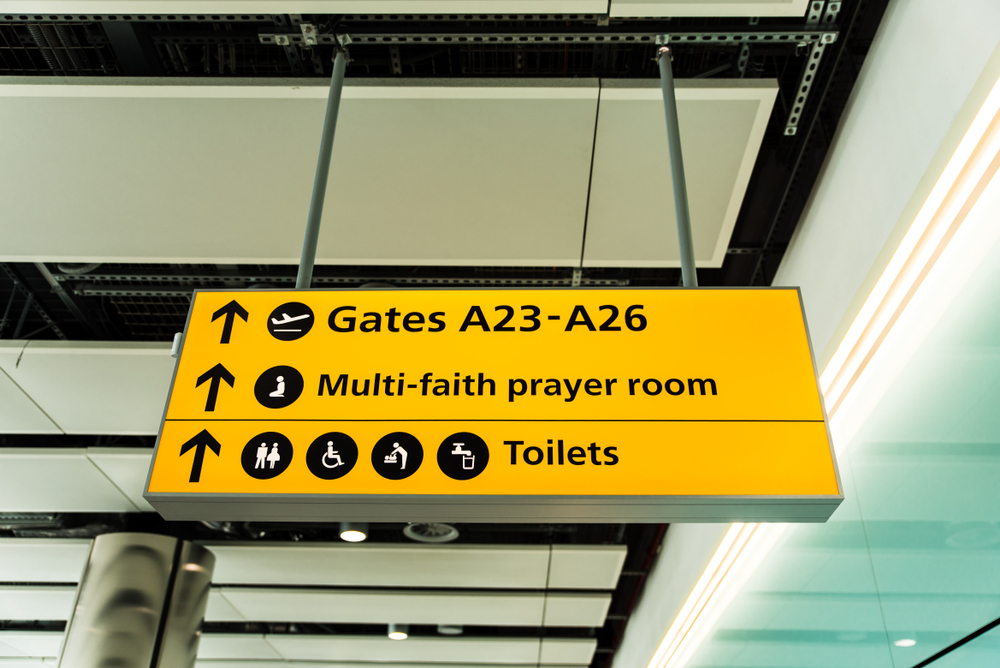Health
When Should You See A Physiotherapist?

Most older adults, even young ones, deal with muscle pain, muscle stretching, or any tissue injury almost daily while doing a particular movement. The reasons behind these things could be different according to their lifestyle. If you’re experiencing pain not going away on its own, please don’t get late to seek a physiotherapist.
We understand that some people need clarification about getting help from a physiotherapist. Sometimes it is because of an unpleasant experience. Call Doctor has brought experienced physiotherapists in Dubai to help you with your concerns.
What kind of services does a physiotherapist provide?
Every person’s body response varies. Some people have serious injuries, and some have no injury history. Therefore, physiotherapists assess each patient and plan treatment according to the severity. Physiotherapy in Dubai help you with these services that are listed down:
- Movement analysis and testing to diagnose injury and the leading cause of injury.
- Exercise plan to improve mobility
- Apply techniques to improve muscle stiffness and reduce pain.
- Soft tissue massage
- Breathing exercise
- Training muscle activation to improve control
- Assist with a walking stick, wheelchair, splints, and crunches to help you move around.
When do you need a Physiotherapist?
Let me explain this example. Suppose you’re on the daily jog, and suddenly your foot gets stuck, and you fall. There may be a little scrap on your knee, but you didn’t notice. Should you carry on with your jog or see a physiotherapist at once? Physiotherapists analyze the cause of your pain and work to resolve it.
Today common problems people face when they get an acute injury are when they have a long-standing or a long-sitting time. Such painful conditions are unable to tolerate their symptoms any longer. Physiotherapists in Dubai deal with people with these conditions; Neck pain, Backpain and shoulder pain, Osteoarthritis, ankle and foot pain, or neurological disorders.
We are going to cover the signs when you need a physiotherapist quickly.
Struggling with an injury:
If you’re struggling with the same injury for a long duration, you need to be an in-depth assessment and treatment to underlying the cause of this continuous happening. Just resting is not the permanent solution to cure the injury. Get advice on the proper plan of treatment.
Declining mobility rate:
In conditions like knee pain or shoulder injury, you’re unable to run or face difficulty lifting weights, and when you bend down, back pain stops you from standing correctly. All these issues should be addressed in an acceptable way to seek help from Physiotherapists.
Arthritis or Osteoarthritis:
There are many myths that people suffering from arthritis should avoid physical activity. Even they’re convicted with joint replacement. Physiotherapists are experts in managing these conditions by helping build a joint’s strength and stability.
How important is it to get Physiotherapy at home?
It’s normal nowadays to avail of physiotherapy services at home. It is beneficial when the patient’s condition is relatively serious or when traveling to a physiotherapy clinic is impossible for a patient. In such situations, a physiotherapist visits the home for diagnosis and treatment. The environment at home is considered to be more comfortable for a patient as compared to a clinic. At home, the patient can coordinate with the doctor and discuss the problems in detail. Physiotherapists in Dubai provide services at home with dedicated attention to a particular individual.
Get free pain physiotherapy services in Dubai
Consulting with the physiotherapist is exceptionally good for all your well-being too. Therefore, whenever you see any signs or symptoms regarding your joints, muscles, or other medical condition. You should seek physiotherapy treatment. Call Doctor provides you with the best physiotherapy at home in Dubai. Schedule your appointments with us and get physiotherapy services.
Health
Nourish Your Life Today And Expand Your Life Span in 2024

In a world that often demands more than it gives, finding ways to nourish your life can lead to a more fulfilling and balanced existence. Nourishment goes beyond the food we eat; it encompasses our mental, emotional, and physical well-being. To truly nourish your life, it’s essential to cultivate habits and practices that promote overall health and happiness. This comprehensive guide will explore various strategies to help you nourish your life in every aspect.
1. Understanding True Nourishment
What Does It Mean to Nourish Your Life?
Nourishing your life means providing the necessary sustenance for your body, mind, and soul to thrive. It involves adopting a holistic approach that includes healthy eating, mental well-being, emotional balance, and physical fitness.
The Importance of Holistic Well-being
Holistic well-being recognizes the interconnectedness of the different aspects of our lives. By addressing all areas—physical, mental, emotional, and spiritual—we can achieve a state of harmony and balance.
2. Nourishing Your Body
Balanced Nutrition
Eating a balanced diet rich in fruits, vegetables, whole grains, lean proteins, and healthy fats is fundamental to nourishing your body. These foods provide essential nutrients that support overall health and vitality.
Hydration
Staying hydrated is crucial for bodily functions, including digestion, circulation, and temperature regulation. Aim to drink at least 8 glasses of water daily and adjust based on your activity level and environment.
Regular Exercise
Incorporating regular physical activity into your routine helps maintain a healthy weight, boosts energy levels, and improves mood. Choose activities you enjoy, such as walking, cycling, swimming, or yoga.
Adequate Sleep
Quality sleep is essential for physical health and cognitive function. Establish a consistent sleep routine and aim for 7-9 hours of sleep per night to ensure your body can rest and repair.
3. Nourishing Your Mind
Continuous Learning
Keeping your mind active through continuous learning helps maintain cognitive function and mental agility. Engage in activities like reading, puzzles, learning a new skill, or taking up a hobby.
Mindfulness and Meditation
Practicing mindfulness and meditation can reduce stress, enhance focus, and promote emotional stability. Start with a few minutes each day and gradually increase the duration as you become more comfortable.
Mental Health Support
Seeking support for mental health issues is crucial. Therapy, counseling, and support groups can provide valuable resources for managing stress, anxiety, depression, and other mental health conditions.
4. Nourishing Your Emotional Health
Building Resilience
Resilience is the ability to bounce back from adversity. Cultivate resilience by developing a positive outlook, practicing self-compassion, and maintaining a strong support network.
Emotional Expression
Expressing emotions in a healthy way is vital for emotional health. Journaling, talking to a friend, or engaging in creative activities like art or music can help process and express feelings.
Healthy Relationships
Building and maintaining healthy relationships contribute significantly to emotional well-being. Invest time in nurturing connections with family, friends, and loved ones.
5. Nourishing Your Spirit
Finding Purpose and Meaning
Having a sense of purpose and meaning in life is essential for spiritual nourishment. This can come from work, hobbies, volunteering, or other activities that provide a sense of fulfillment.
Spiritual Practices
Engaging in spiritual practices, whether through religion, meditation, or personal reflection, can enhance your sense of connection and inner peace.
Nature Connection
Spending time in nature can be incredibly grounding and rejuvenating. Activities like hiking, gardening, or simply sitting in a park can foster a deeper connection with the natural world.
6. Practical Steps to Nourish Your Life
Setting Goals
Set realistic and achievable goals that align with your values and passions. Having clear goals gives direction and purpose, motivating you to make positive changes.
Creating a Routine
Establishing a daily routine that includes time for self-care, work, and leisure helps create balance. Consistency in your routine can lead to better habits and improved well-being.
Self-Care Practices
Self-care involves taking deliberate actions to care for your physical, mental, and emotional health. This could include activities like taking a relaxing bath, reading a book, or practicing yoga.
7. Overcoming Barriers to Nourishment
Time Management
One of the biggest challenges to nourishing your life is finding the time. Prioritize your well-being by scheduling time for activities that nourish you, and learn to say no to commitments that drain your energy.
Staying Motivated
Maintaining motivation can be difficult. Surround yourself with supportive people, track your progress, and celebrate small victories to stay motivated on your journey.
Access to Resources
Access to resources like healthy food, fitness facilities, and mental health support can be a barrier. Explore community resources, online programs, and affordable options to overcome these challenges.
8. The Benefits of a Nourished Life
Improved Physical Health
Adopting nourishing habits can lead to better physical health, including increased energy levels, improved immune function, and reduced risk of chronic diseases.
Enhanced Mental Clarity
Nourishing your mind through continuous learning and mental health support can enhance cognitive function, memory, and mental clarity.
Greater Emotional Stability
Practicing emotional expression and building resilience can lead to greater emotional stability, reducing stress and improving overall mood.
Deeper Spiritual Connection
Engaging in spiritual practices and finding purpose can lead to a deeper sense of connection and inner peace, enriching your life experience.
Conclusion
Nourishing your life is an ongoing journey that requires intentional effort and commitment. By addressing all aspects of well-being—physical, mental, emotional, and spiritual—you can achieve a balanced and fulfilling life. Remember, small, consistent changes can lead to significant improvements in your overall well-being.
FAQs
1. How can I start incorporating mindfulness into my daily routine?
Begin with short sessions of mindfulness meditation, focusing on your breath and being present in the moment. Gradually increase the duration and try to incorporate mindfulness into everyday activities like eating and walking.
2. What are some affordable ways to improve personal well-being?
Affordable ways to improve well-being include practicing yoga at home, using free health apps, engaging in outdoor activities, and connecting with supportive communities online or locally.
3. How does wearable technology benefit personal well-being?
Wearable technology helps track physical activity, monitor sleep patterns, and provide health insights, enabling individuals to make informed decisions about their well-being and maintain healthy habits.
4. What are some effective stress management techniques?
Effective stress management techniques include mindfulness meditation, deep breathing exercises, physical activity, journaling, and spending time in nature.
5. How can I maintain a work-life balance?
Maintain a work-life balance by setting boundaries, prioritizing tasks, taking regular breaks, and ensuring time for personal activities and relaxation. Flexible working conditions and ergonomic workspaces also help in achieving this balance.
Health
How Europeans can use surrogacy in Ukraine to find their happiness

Surrogacy has emerged as a viable option for individuals and couples across the globe facing challenges with conception or pregnancy. Among the countries offering surrogacy services, Ukraine has gained prominence as a popular destination, attracting prospective parents from Europe and beyond. In this comprehensive guide, we delve into the landscape of surrogacy in Ukraine, providing insights, considerations, and essential information for European individuals and couples exploring this pathway to parenthood.
The Legal Landscape of Surrogacy
One of the primary draws of surrogacy in Ukraine for European intended parents is its favorable legal framework. Ukrainian legislation permits surrogacy arrangements, providing a clear legal pathway for establishing parental rights. The country’s laws prioritize the rights of intended parents, ensuring that they are recognized as the legal parents of the child born through surrogacy, with the surrogate and her husband (if applicable) relinquishing all parental rights.

Medical Expertise and Infrastructure
Ukraine boasts a robust medical infrastructure and a wealth of fertility clinics with advanced technologies and experienced professionals specializing in assisted reproductive techniques. Prospective parents can access comprehensive medical evaluations, fertility treatments, and surrogacy services tailored to their specific needs.
Surrogacy in Ukraine: Affordability and Accessibility
Compared to surrogacy options in other European countries or the United States, surrogacy in Ukraine is often more affordable, making it an attractive option for European individuals and couples seeking cost-effective alternatives. The relatively lower cost does not compromise the quality of medical care or legal protections, offering a compelling value proposition for prospective parents.
Ethical Considerations
While Ukraine provides a conducive legal and medical environment for surrogacy, prospective parents should approach the process with ethical considerations in mind. It is essential to prioritize the well-being and rights of all parties involved, including the surrogate, egg donor (if applicable), and the child. Open communication, transparency, and respect for the autonomy and dignity of the surrogate are paramount throughout the surrogacy journey.
Cultural and Logistical Factors of Surrogacy
European intended parents embarking on the surrogacy journey in Ukraine may encounter cultural and logistical differences. Understanding and navigating these nuances, including language barriers, cultural norms, and logistical arrangements, are integral to ensuring a smooth and successful surrogacy experience.
Surrogacy in Ukraine offers European individuals and couples a promising pathway to parenthood, combining legal clarity, medical expertise, affordability, and accessibility. By familiarizing themselves with the legal framework, medical infrastructure, ethical considerations, and cultural aspects of surrogacy in Ukraine, prospective parents can make informed decisions and embark on their journey to building a family with confidence and peace of mind.
Health
UTI Dyer: Why You Should Be Concerned About Urinary Tract Infections

Urinary tract infections, also known as UTIs, can happen to anyone at any time – and they’re not always easy to tell if you have one. Most UTIs occur in the bladder but in severe cases can spread to the kidneys or even ascend up into the ureters and cause problems in the kidney. If left untreated, UTIs can lead to complications and even sepsis – which can be life-threatening.
Part One – UTIs (Urinary Tract Infections) Explained:
Urinary tract infections (UTIs) are an infection of the urinary system. UTIs usually occur in the bladder and sometimes spread to the kidneys. Symptoms can include pain or burning when urinating, frequent urination, and blood in the urine. Most cases of UTIs are easy to treat with medication.
You May Also Like:
Part Two – Symptoms And Causes:
Urinary tract infections, or UTIs, are one of the most common types of infections that affect the urinary tract. UTIs can occur in any part of the urinary system including the bladder, kidneys, and urethra. Symptoms of a UTI include an urge to urinate more often and at night, pain or burning sensation when urinating, cloudy urine, and blood in the urine. The majority of cases start out as mild UTIs but without treatment, they can become severe if they spread to other parts of the body. There are many different causes for a UTI including diabetes, birth control, and increased sexual activity.
Part Three – Treatments And Prevention:
Urinary tract infections are typically caused by bacteria, which are present on the skin around the genitals or anus and in the urethra (a tube connecting the bladder to the outside of the body) and bladder. The main symptom of UTI is pain or pressure in your pelvis, lower back, or near the pubic bone. Other symptoms can include a burning sensation when urinating, a sense of needing to go more often than normal, blood in urine, and cloudy urine. Treatment for urinary tract infections includes drinking plenty of fluids to flush out bacteria from your system, resting, and taking over-the-counter medications like ibuprofen for pain relief. In more severe cases you may be prescribed antibiotics to fight off infection. Prevention is important as well.

 Others1 year ago
Others1 year agoDavid T Bolno: Why Giving Back To The Community Is So Crucial

 Travel1 year ago
Travel1 year agoPractical And Essential Car Interior Accessories To Add Comfort And Convenience To Your Drive

 Travel1 year ago
Travel1 year agoBusiness Visa for CANADA

 Fashion1 year ago
Fashion1 year agoTips For Choosing The Right For Engagement Diamond Rings

 Tech1 year ago
Tech1 year agoThe Best Way to Never Get Lost: Buy Wayfinding Signs!

 Business1 year ago
Business1 year agoTop Reasons Why you Need to Consider Outsourcing Real Estate Photo Editing

 Health1 year ago
Health1 year agoGarlic Is The Best Vegetable To Treat Heart Problems

 Business1 year ago
Business1 year agoDead And Co Setlist What They Played At The Gorge Amphitheatre
